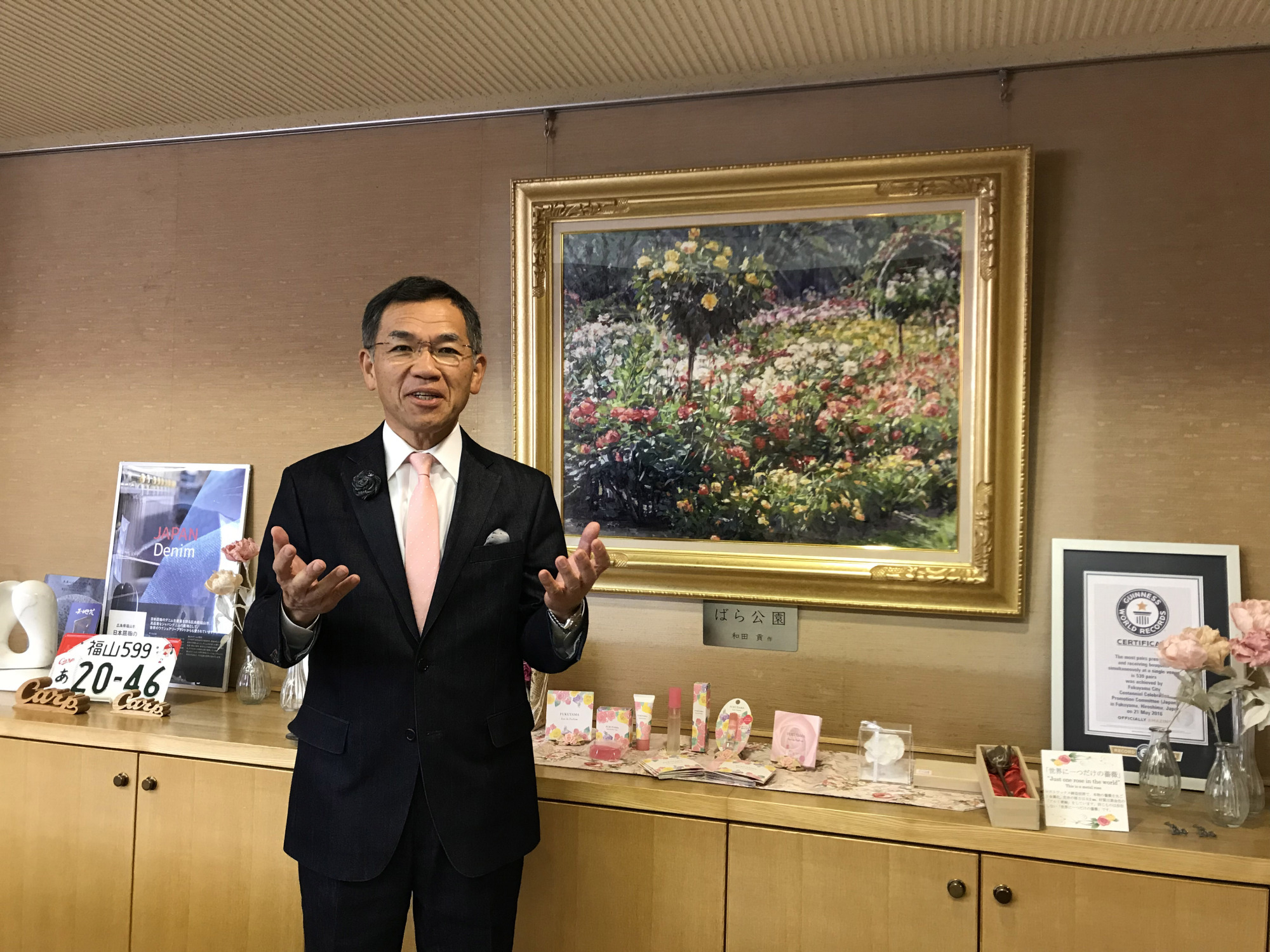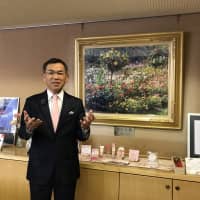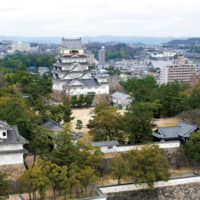Fukuyama is the second-largest city in Hiroshima Prefecture with a population of approximately 470,000. It is located on the sunny coastal side of the Chugoku region, facing the Seto Inland Sea with the Chugoku mountain range in the background. It has served as a key point of traffic for both marine and land routes since ancient times.
On the mountainside, activities to preserve and revitalize satoyama (forested areas tended by local people) and rural villages are conducted through the collaboration among the city, farm and forest owners, local organizations, nonprofits, enterprises, universities and other action groups.
The urban and industrial areas have been known for the production of steel, and electronic and manufacturing machines. "Fukuyama is also a major production area for glass beads and denim materials," said Fukuyama Mayor Naoki Edahiro — dressed in a glossy, dark navy denim suit with an elegant rose corsage made of leftover denim material — in an interview with The Japan Times.
In the center of the city is Fukuyama Castle, originally built in 1622 and close to Fukuyama Station, which the Sanyo Shinkansen runs through.
Part of the castle, including tenshukaku, the main tower, burned down in the Fukuyama air raid two days after the atomic bombing in Hiroshima in 1945.
The lost and damaged buildings were rebuilt and restored in 1966, once again becoming the symbol of Fukuyama in commemorating the city's 50th anniversary.
"Fukuyama Castle is the only castle in Japan that is so close to a shinkansen line that both the castle and shinkansen can be photographed together," said Edahiro.
He said that the city is planning to celebrate the 400th anniversary of the castle the same way people celebrated the completion of the castle four centuries ago, with tondo (a tradition in which straw towers are set on fire in celebration).
Roses are also an important and historical feature of Fukuyama. By 2016, a million roses had been planted in Fukuyama, the year of the city's 100th anniversary.
The roses in Fukuyama also have a story to tell. Approximately 80 percent of the central part of the city was turned to ash due to the same air raid that destroyed the castle in 1945.
"When the city was still in the middle of the recovery process after the war, citizens planted about 1,000 rose seedlings in the spring of 1956 in hopes of refreshing the shattered land and restoring comfort to people's minds," said Edahiro.
That was the beginning of the Rose Park in Fukuyama that now boasts roughly 5,500 roses of 280 kinds across 15,000 square meters of land, slightly bigger than two soccer fields. The city offers a rose ownership system through which residents and people from outside Fukuyama can have their own plants with personalized nameplates and receive invitations to various events, including rose-cutting events that are held in May and October every year.
Out of the million rose plants in Fukuyama, where are the rest? "You don't have to go to the Rose Park to enjoy roses in Fukuyama. They are also planted in various places across the city," said Edahiro.
One such location is the short walk from Fukuyama Station to city hall where roses bloom along the roadside, in the bus terminal and in front of buildings in spring and autumn. They are taken care of by local residents. "Different generations of residents are communicating through roses. Even non-residents come into the city thanks to the rose ownership system," said Edahiro. In 2024, the 20th World Rose Convention will be held in Fukuyama.
Along the seaside at the edge of the city is the picturesque port district of Tomonoura. It was designated a Japan Heritage site by the Agency for Cultural Affairs this year. It is also a Preservation District for Groups of Traditional Buildings and is part of UNESCO's Memory of the World registry. Tomonoura is the only place in Japan that holds all three of these designations.
"Tomonoura receives 36,000 inbound tourists annually. But with its nostalgic streetscape, historic buildings and the scenes of the locals' slow and down-to-earth way of living, as well as the modern beauty of cruise ships with the old townscape in the background, it still has room to grow as a tourist destination," said Edahiro. "Making the most of the existing resources is the way to revive rural economies and restore the environment at the same time."
This series introduces municipalities and local companies promoting the beauty and excellence of deep Japan.





















With your current subscription plan you can comment on stories. However, before writing your first comment, please create a display name in the Profile section of your subscriber account page.